Can Quikrete Be Mixed In The Hole?
Important Point
Yes, the Quikret sinks into a hole. Quikrete is a manufacturer of ready-to-use packaged dry concrete.
Another famous brand of bagged concrete is called Quicrete. Pouring concrete into a pit filled with water without taking measurements is not a good idea.
How much concrete you mix depends entirely on the project you’re working on.
With quick-setting concrete, no mixing or equipment is needed—you can put the dry mix directly from the bag into the hole, then add water.
They also come in various blends, including high power, countertop, quick setting, and standard 3500 psi.
Most QuickCrate is screwed into holes on the outside of the bag, making setting posts more accessible.
Some use dry concrete to fill gaps in soil and fence posts, which allows soil moisture to seep in and harden the concrete.
However, water is still recommended. Adding about 6 inches of compacted gravel to the bottom of the hole is also recommended.
Add quick-set concrete to the post-bar spot, mix concrete without setting, and pour suitable water on top. A drainage system requires digging pits of appropriate width and depth and filling the bottom of the holes with gravel.
Concrete has a gravel admixture that is suitable for this application.
For example, more water will work well for fence posts, but if you want something more substantial, drain as much water as possible before pouring the concrete.
Add water to run the mixed QuickCret directly from the bag into the QuickSet hole.
The installer walks up to the post hole, throws in a bag’s worth of dry concrete mix, adds some moisture, and claims it will set on top of it. You can pour concrete into water.
Professionals do this all the time. You have a small puddle in your basement, which is a problem.The biggest problem with pouring concrete underwater is movement.
You can mix them by hand or using a mixing machine.
How To Mix Concrete In The Hole?
Concrete mix in the hole if your fence is crumbling; You probably need a new post. Mixing concrete in a hole is more accessible than mixing and pouring in trays or wheelbarrows.
The concrete mixture was run directly into the hole from the bag. Recommend Quickret Fast-Setting Mix or another brand equivalent when mixing concrete in spots.
It sets hard, fast, and decisive, requiring no mixing before pouring.
Water is then added, activating the cement and hardening the mixture. Concrete mixed in the spot is as strong as concrete mixed outside the recess.
You put the commands directly into the ground, but many people use concrete if they have a large wall or live in a windy area.
Here’s how you do it without any cement mixer or bucket.
If your fence is crumbling, most likely, you need new posts. You can put the commands directly into the ground, but many people prefer concrete if they have a large wall or live in a windy area.
Here are some quick and easy guides to properly mixing concrete in the hole.
1. Measure the Post and Collect the Cement and Water:
Before you set up a seat, make sure it’s straight and tall, especially if it’s a wooden fence post. Cement, water, and post are best. It is also helpful to have a level to ensure that the seat is upright and has something to stabilize its position.
To do this, measure the height of your desired fence and add about one-third to your posts.
Small pieces of wood work well when pouring concrete, even if you have supports to keep your post upright.
And if warped or bent, set it properly to the fence or both. Keeping a crossbar between them will take work.
2. Dig a Hole ⅓ the Length of the Pole:
Dig your hole to the required depth and diameter. If you are digging a post hole, its diameter should be three times the post’s width.
Some residences require holes at least 30 inches (76.2 cm) deep for posts, so keep that in mind when measuring your potential fence height.
They will ensure adequate support to hold the concrete in and prevent the bars from becoming too heavy or tipping.
Remove any rocks or roots that could tip your seat while the concrete is placed.
Concrete to extend and enclose the post without sacrificing stability. It needs enough space.
For example, a 4” wood post hole is about 12 inches wide: the depth of the hole is 1/3 – 1/2 the height of the post above the ground. For example, a 6-foot tall fence will require a hole at least 2 feet deep.
3. Line the Bottom of the Hole with 6” of Gravel:
Once you have dug the hole, add a gravel layer. It provides drainage for the spot and keeps the post from absorbing groundwater.
Add at least six inches of rock to the bed and spread it evenly. Pea gravel usually works well if you need help figuring out where to start.
Once you’ve done that, drop the stone at the end of your post.
They will prevent excessive concrete mixing between rocks and provide a tighter, more efficient drainage system.
It will also ensure that the gravel is spread evenly and will not distort the set post.
4. Keep the Post Straight and Centered in the Hole:
Once the gravel is down, you can finally set the post itself. Finally, once the cement is in place, there is no turning back to change the position of the post.
You can use a level to make sure it is entirely straight. Fill the hole with a reasonably quick-setting concrete mix.
Take the mixture out of the bag and pour it into the hole.
Leave the concrete about 3 to 4 inches below ground level. Do not pour concrete up to grade level; You can try setting it once.
You can also tie the bars to other pieces of wood, so you don’t have to hold them until the concrete sets.
It is a critical step, a massive waste of time and supplies, and frustrating. It’s best to double-check to ensure your post is straight before pouring cement.
5. Pour Cement Until It Is Stacked 3 Inches Above the Ground:
A friend or helper can also help hold the post steady while pouring it to ensure it doesn’t tip or move before the concrete fills the hole.
Remember to wear gloves and safety glasses – fast-act concrete is dusty and can damage your eyes or lungs if you touch or breathe it in.
Because of this, the depth and width of the gap varies depending on the brand of concrete.
Assume the hole for your post is thirty inches by 76.2 cm. If it is more than half a baritone of concrete before water and you add some water, the other half will be better.
It will ensure all the concrete is well mixed and the bottom gets as much water as the top concrete.
6. Add the Recommended Amount of Water:
When the concrete is poured, it is time to add it.
The directions on the concrete are to pour enough water into the hole to set the cement but not so much that it soaks into the soil around the hole.
Pour it slowly over the concrete, allowing the water to saturate the bottom.
The final step is where you can adjust the pole, so it’s essential to ensure it’s straight before proceeding.
Immediately after you pour the water, level the bar one last time before letting the concrete set.
After this, the post is placed in the concrete unless you finally start by pulling it out of the ground.
7. Wait Four Hours for the Concrete to Harden:
Even with fast-setting concrete, patience is required. If you’re using a slow brand, wait four hours or more, and don’t touch the bar or cement until it’s completely set.
You can leave it overnight to continue adding to your post to ensure the glue is set.
If you stress the post or remove the bracket before it sets, the concrete will buckle, and your post will no longer be straight.
Waiting about 4 hours before attaching fence panels or applying weight to posts allows the concrete to set quickly but still takes time to cure and harden.
Once the adhesive has completely hardened, you can remove the brackets and add weight to the poles.
You can add crossbars and weights or continue to install other fence posts.
Useful Article for You
- How Much Does a Yard of Concrete Weigh
- How Tall Is a Door
- How Many Stairs in a Flight
- How Many Bags of Concrete in a Yard
- How to Get Burnt Smell Out of Microwave
- How Far Apart Should Fence Posts Be
- How Are Bridges Built Over Water
- How Many People Died Building the Great Wall of China
- How to Draw House
- How to Build a Lean to Roof
- How Many Bags of Concrete for 1 Yard
- How Much Does Cinder Block Cost
- How to Get a House for Free
- How Much Does It Cost to Soundproof a Room
- How to Read a Measuring Tape in Meters
- How to Mount a TV on a Brick Wall
- How Many Brick Are in a Cube
- How Is Transported Soil Different from Residual Soil
- How to Use Washers
- How to Get Property for Free
- How Is Tar Made
- How Much Does Gallon of Water Weight?
- How Many Tiles Do I Need?
- How Much Does It Cost to Build a Pergola?
- How Much Does a Concrete Slab Cost?
- How Much Does a Yard of Gravel Weigh?
- How Many Shingles Do I Need for a 24×24 Garage?
- How to Remove Paint from Concrete Without Chemicals
- How to Cover Concrete Walls in Basement
- How to Find Wall load
- How to Build a Cavity Wall
- How Much Does a Heated Driveway Cost
- How Much Spray Foam Do I Need
- How to Get Blood Out of Carpet
- How to Mix Concrete
- How to Find the Contour Interval
- How to Identify Zero Force Members
- How To Install A Welded Wire Fence
- How Much Concrete Per Fence Post
- How to Install a Wire Fence
- How to Remove Fence Post
Do You Add Concrete To Water Or Water To Concrete?
Whether you mix concrete with water or concrete with water: Whether you mix concrete with water, mix concrete with water, or make anything out of concrete, dry concrete needs to combine with water to start the chemical reaction that creates concrete.
Ideally, you add water to concrete, not concrete to water. When adding water to concrete, start by making a small well in the center of the concrete.
Add enough water to moisten the mixture but not so wet it becomes soupy. Consistency is like porridge. However, if you have a hole filled with water, pouring dry concrete into it is okay.
And only add a little water to the concrete. They will result in wet concrete, which is weak and brittle.
Remember, each 50-pound bag of Quikrete fast-setting concrete requires about 1 gallon of water.
If the concrete you are using has a lot of water in the hole, drain some of the water before pouring the concrete.
If you use too much water, add more dry mix until you get the desired consistency.
The lesson teaches you how to mix and pour concrete properly. Although mixing concrete seems straightforward, it’s the easiest part to get wrong.
Can You Pour Concrete In A Hole Filled With Water?
Can you pour concrete into a hole filled with water: Yes, you can pour concrete into water.
The good news is that you can run concrete in water. Professionals do this all the time. You have a small puddle in your basement, which won’t be a problem.
Mixing the concrete from scratch is quite a procedure, mainly if you follow each step meticulously.
Each 50-pound bag of Quikret requires approximately one gallon of water.
When pouring concrete into a hole filled with water, remember that if there are about 2 gallons of water, you will need two 50-pound bags of concrete.
Concrete is about 2½ times heavier than water, so it naturally displaces water when it is poured into the hole.
However, when running inside the hatch, there is no room for water to move up and out of the hole. About one gallon of water per 50-pound bag of Quikrete fast-setting concrete mix is needed.
The most common applications for the cases like these are when holes are filled, such as placing a laundry with the pole in the ground, erecting fences, and planting a mailbox post.
You are good to go if you are looking for something that does not need finishing. However, if you need to give it a finished look, there might be better ideas.
Why Do You Put Dry Concrete In A Post Hole?
Why do you pour dry concrete into post holes: The dry mix and pour is much more convenient.
You do not have to mix it, which requires tools and cleaning. To determine whether or not it is necessary to use dry concrete in a post hole, it is essential first to understand the basics of dry concrete.
And dry concrete is a fast-setting concrete mix that does require mixing. Because the quick-setting mixture hardens and strengthens so quickly, I can keep the panels setting for about 4 hours.
Another advantage of wet-mix versus dry-laid concrete is no gap between the post and the soil.
It comes in a bag and can be poured directly into the post hole. Once the need for dry concrete is determined, it becomes necessary to analyze the pros and cons of using it in a post-hole.
This helps prevent erosion that can cause the shaft to bend.
When setting the bar, maximum PSI is less important than creating a tightly packed hole to keep the post level and secure.
Can Fence Posts Be Set In Dry Concrete?
Fence posts can be set in dry concrete: Installing fence posts with dry cement Another benefit of dry adhesive is drainage around fence posts.
Once the hole is dug, add a few inches of gravel and press it down.
Then insert your post and secure it with some brackets. After the base is level and plumb, pour dry concrete from the bag and into the hole.
Fence posts are easy to install with dry glue. You want to drive about 5 inches of dry cement into the hole around the fence post and press it down.
Use a suitable concrete mix to set fence posts in dry concrete.
Generally, the depth after the spot should be one-third to one-half of the actual height from the ground.
Therefore, a six-foot-high finished post should ideally be three feet deep in the background.
Concrete will harden even without water. It will also absorb moisture from the air, soil, and rainwater.
Depending on the weight of your fence, soil conditions, and local climate, you can get away with two feet.
How Long Does It Take Concrete To Dry In A Post Hole?
How long does concrete dry in post holes: Concrete in post holes takes time to set, so for best results, you should wait at least 24 hours before digging and building the wall.
Generally, it takes 24 to 48 hours for plain concrete to dry enough to drive on or walk on.
Wait at least four hours before applying weight or pressure to drill holes in a post or fence.
A week after the concrete is placed, you can walk on the concrete and do regular work.
However, the concrete will only be at about 70-70% of its full strength, so operating heavy machinery during this time is not recommended.
Therefore, the drying process is continuously fluid, reaching maximum power after about 28 days.
What Happens When You Don’t Add Enough Water To Concrete?
What happens when you don’t pour enough water into concrete: One of the most important aspects to understand about concrete is that concrete is made by mixing different products.
Generally, it is a mixture of water, glue, and sand. Concrete is a mixture of cement, sand, and stone. Cement is the active ingredient in the medicine.
Adequate water is needed to activate all the cement in the mix. When cement is mixed with water, it becomes activated.
One of the most common mixing mistakes the average concrete worker makes is adding too much water to the concrete. The chemical reaction creates strong bonds that hold the concrete together.
The process is called hydration. Not mixing hard water with concrete can damage the house’s foundation—resulting in low PSI of brittle concrete.
With the proper water-to-concrete ratio, the mix will achieve its strength. Fence builders will not use quickening or add water.
Concrete is used to stabilize and hold the position.
Quikrete Yellow Bag Cure Time
Curing should be started as soon as possible and should continue for a period of 5 days in warm weather at 70 ºF (21 ºC) or higher or 7 days in colder weather at 50 ºF to 70 ºF (10 ºC to 21 ºC).
How Long Does Quikrete Take to Set in a Post Hole?
The concrete sets up in 20 to 40 minutes, so you can quickly move on to the next stage of the project (a great convenience when setting fence posts) or backfill the hole to finish the job. Under normal curing conditions, you can apply heavy weight to the post (a basketball backboard, for example) after just 4 hours.
Can You Mix Concrete in the Hole?
Fix the hole with your concrete mix until it’s about 3 inches below the ground level. (this will allow for grass to grow right up to the posts if you want). Add water using a bucket or a hose. Aim for 1 gallon of water per 50-pound bag of concrete.
Fence Post Concrete Mix Ratio
The ratio to mix is 3-2-1, 3 sand, 2 gravel, and 1 cement, then add water until the mix is consistent. Avoid too much water. It doesn’t matter how much you mix, a small amount or a large amount, as long as the ratio is the same in every mix, you will get consistent concrete.
Best Concrete Mix for Fence Posts
Quikrete is the best concrete mix for setting fence posts. The fast-setting concrete mix is easy to work with, doesn’t require mixing, and sets up quickly. All you do is pour it directly into the hole and soak it with water.
How to Put a Post in the Ground Without Concrete?
Gravel: Filling the hole with gravel will help to support the fence post. This method is stronger than using dirt, but not as strong as using cement. Sand: Filling the hole with sand will help to support the fence post. Like gravel, this method is stronger than using dirt, but not as strong as using cement.
Will Wet Concrete Stick to Dry Concrete?
Fact: Fresh wet concrete does not normally bond well to existing dry concrete.
How to Mix Concrete Ratio?
In terms of the ratio for concrete, it depends on what strength you are trying to achieve, but as a general guide a standard concrete mix would be 1 part cement to 2 parts sand to 4 parts aggregates. For foundations, a mix of 1 part cement to 3 parts sand to 6 parts aggregates can be used.
Concrete Mix Formula
The safest bet for any concrete mix is four-two-one: four parts crushed rock; two parts sand; and one part cement. The four-two-one mix, obviously, has seven parts. Conveniently, when mixing concrete, the ratio can be mixed on any range of scales.
Pour Dry Concrete Then Add Water
Fast-setting concrete is ideal for setting posts because there’s no mixing—you simply pour the dry concrete from the bag right into the hole, then add water.
How Long Does Concrete Take to Cure in a Post Hole?
How long does concrete take to set in a post hole? We would advise waiting at least four hours before any weight or pressure is applied to the posts or fence holes. For best results, you should wait at least 24 hours before you continue hole and fence construction.
Dry Setting Concrete
Dry concrete is a fast-setting concrete mix that does not require mixing. It comes in a bag and can be poured directly into the post hole. Dry concrete is ideal for setting posts because it eliminates the need for mixing and sets quickly.
Dry Set Vs Wet Set Fence Posts
While using dry cement, or gravel, to set your fence post can be much less messy; it can also potentially be less durable. Dry cement is best suited for soils that consist of a more clay-like composition. It does not do as well as wet cement in loose soil.
How Long Should Concrete Cure Before Hanging a Gate?
How long till the concrete is dry? It will normally be dry within 24 hours but I would tend to give it 48 hours before hanging the gates off the posts.
How Long Does Quikrete Take to Cure in Cold Weather?
Curing should be started as soon as possible and should continue for a period of 5 days in warm weather at 70 degrees F (21 degrees C) or higher or 7 days in colder weather at 50 – 70 degrees F (10 – 21 degrees C).
Quikrete Drying Time Temperature
The ideal circumstances for curing are ample moisture and moderate temperature and wind conditions. Curing should be started as soon as possible and should continue for a period of 5 days in warm weather at 70 degrees F (21 degrees C) or higher or 7 days in colder weather at 50 – 70 degrees F (10 – 21 degrees C).
Like this post? Share it with your friends!
Suggested Read –
- Cement Price List
- Cinder Block Fence
- Fence Post Anchors
- Metal and Wood Fence
- Types of Privacy Fences
- What Is Concrete Flatwork
- Cheap Way to Extend Fence Height
- What Is Tongue And Groove Ceiling
- What Consistency Should Concrete Be
- Polysulfide Sealant Vs Polyurethane Sealant
- Differences Between Shear Slump and Collapse Slump in Slump Test
Originally posted 2023-08-20 16:44:40.

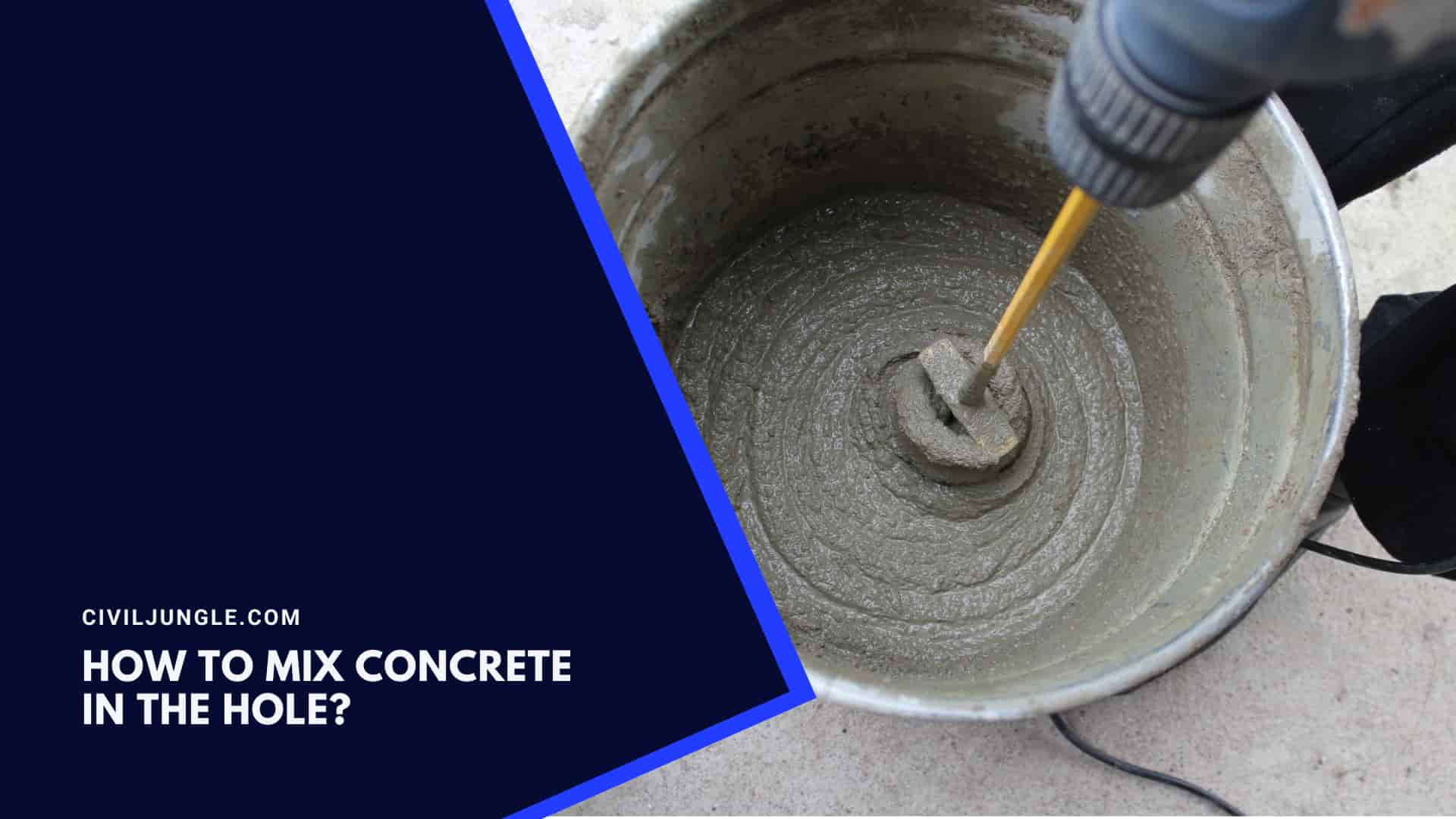
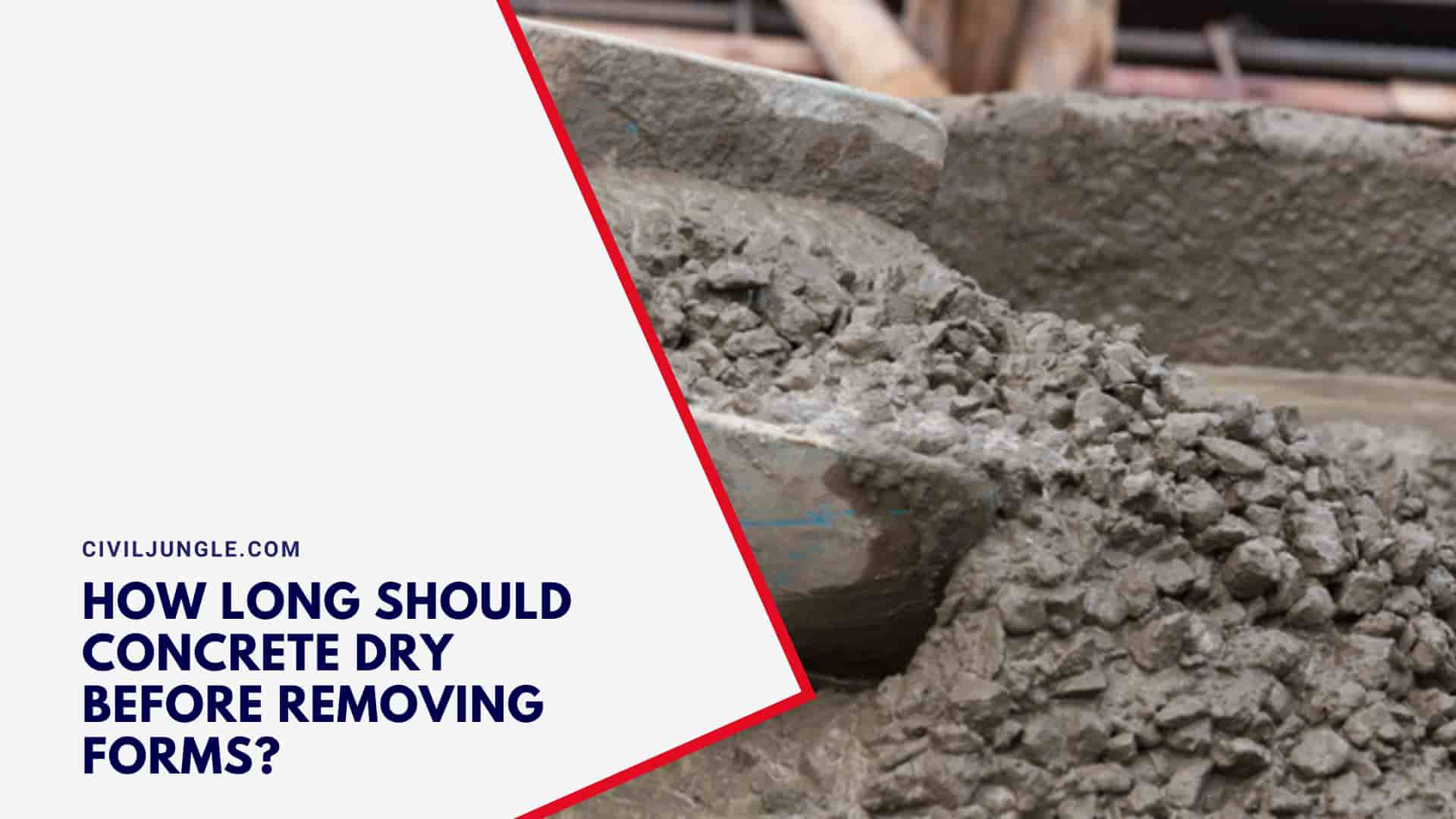
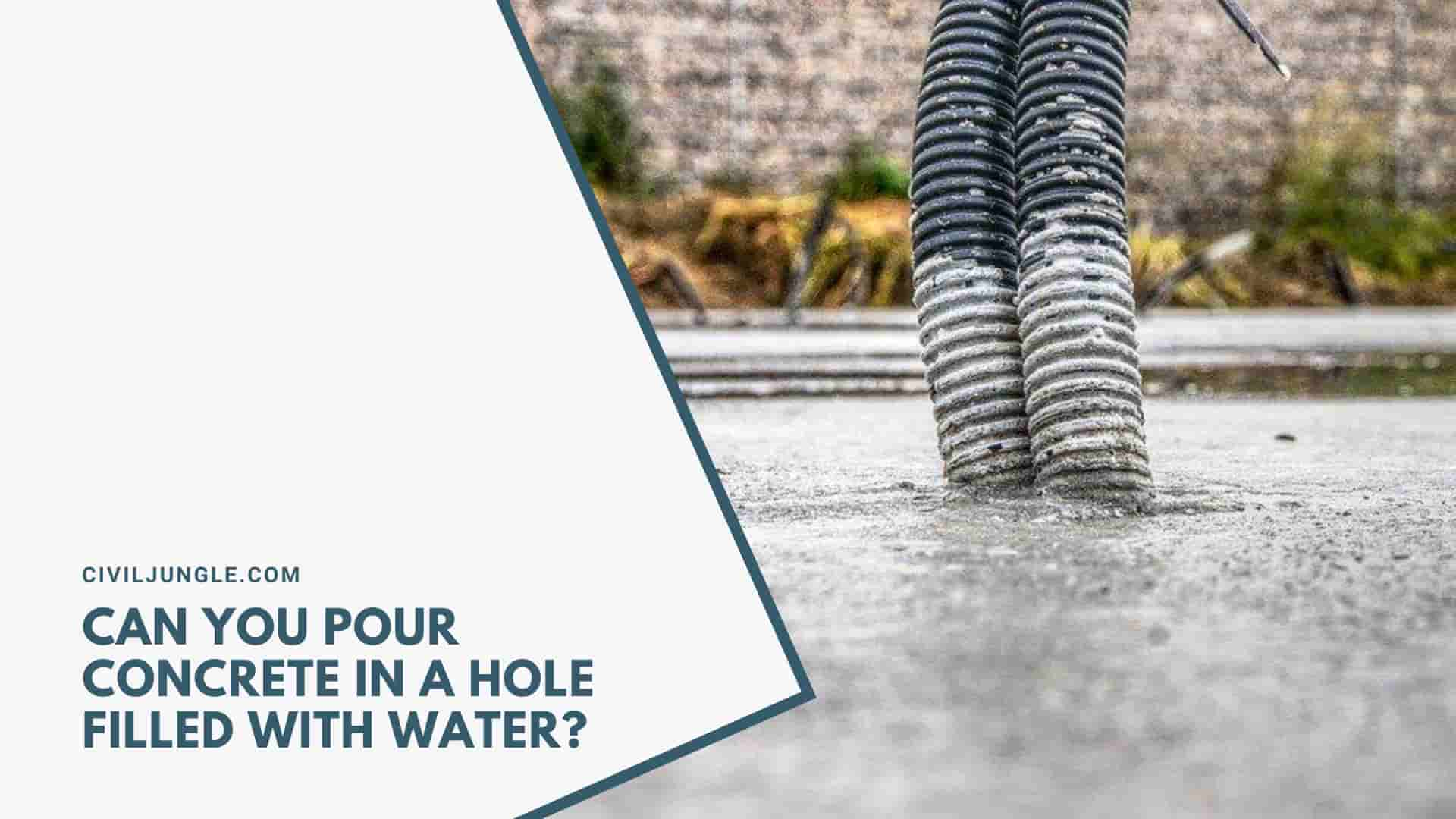
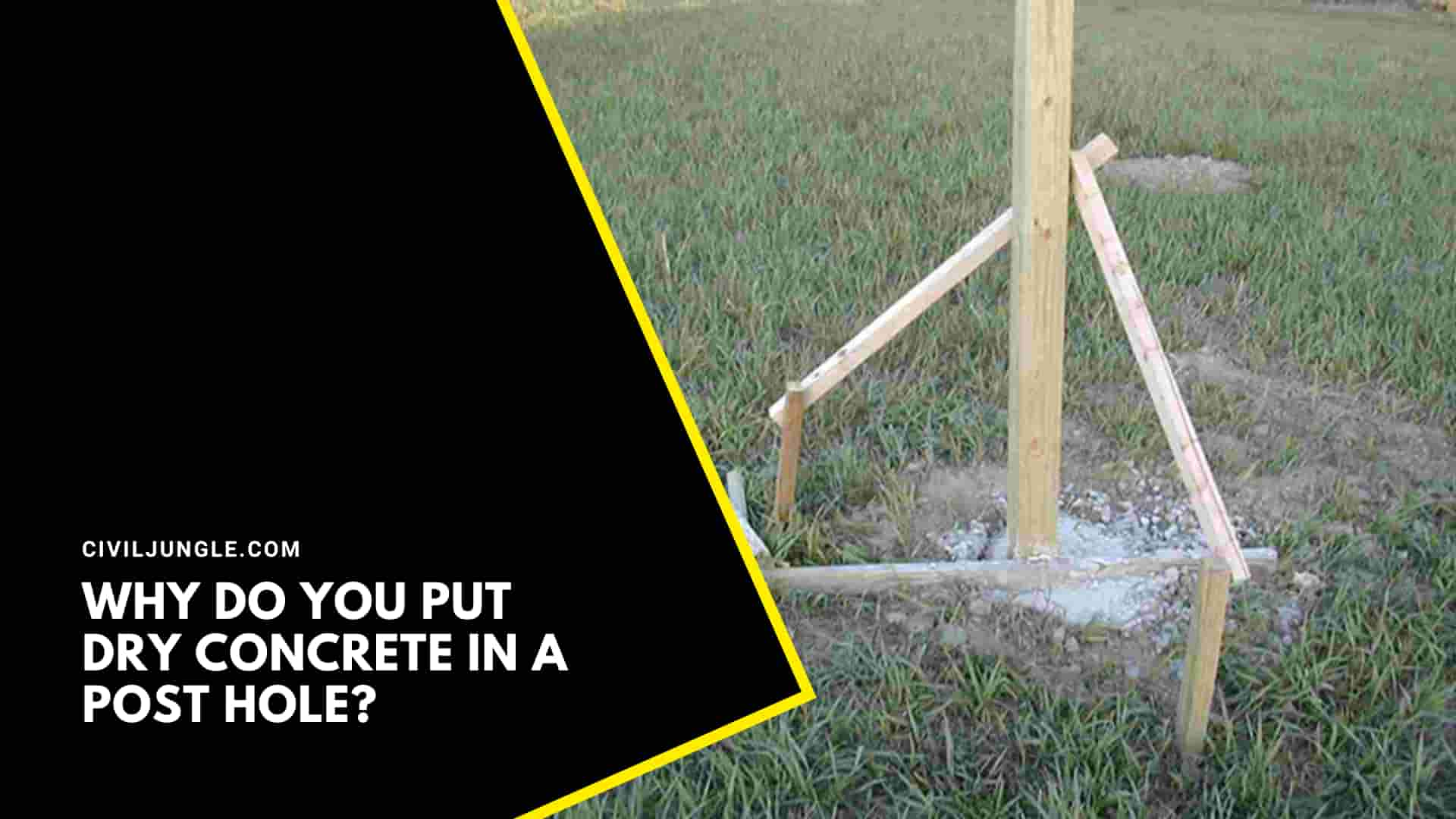
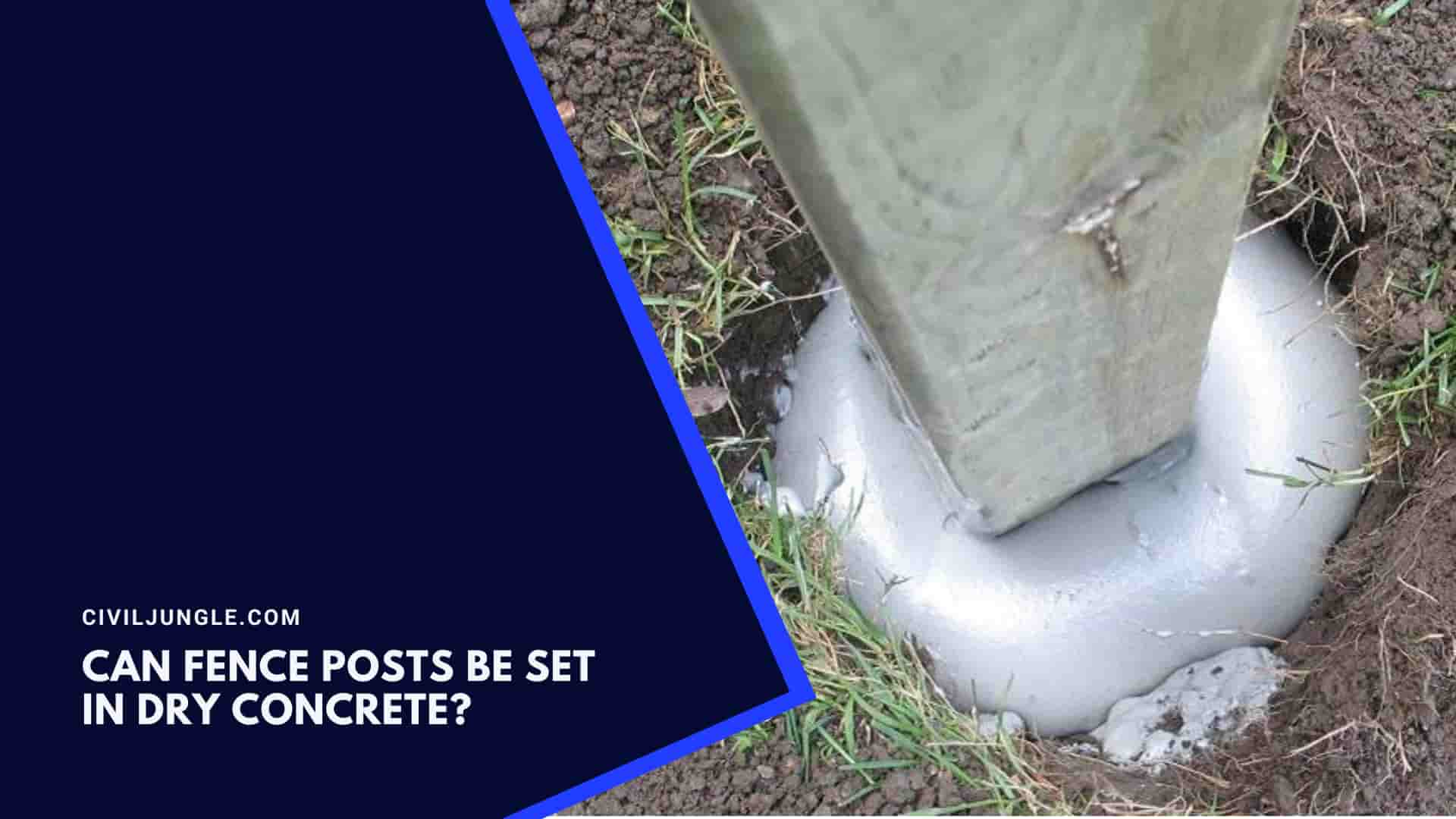
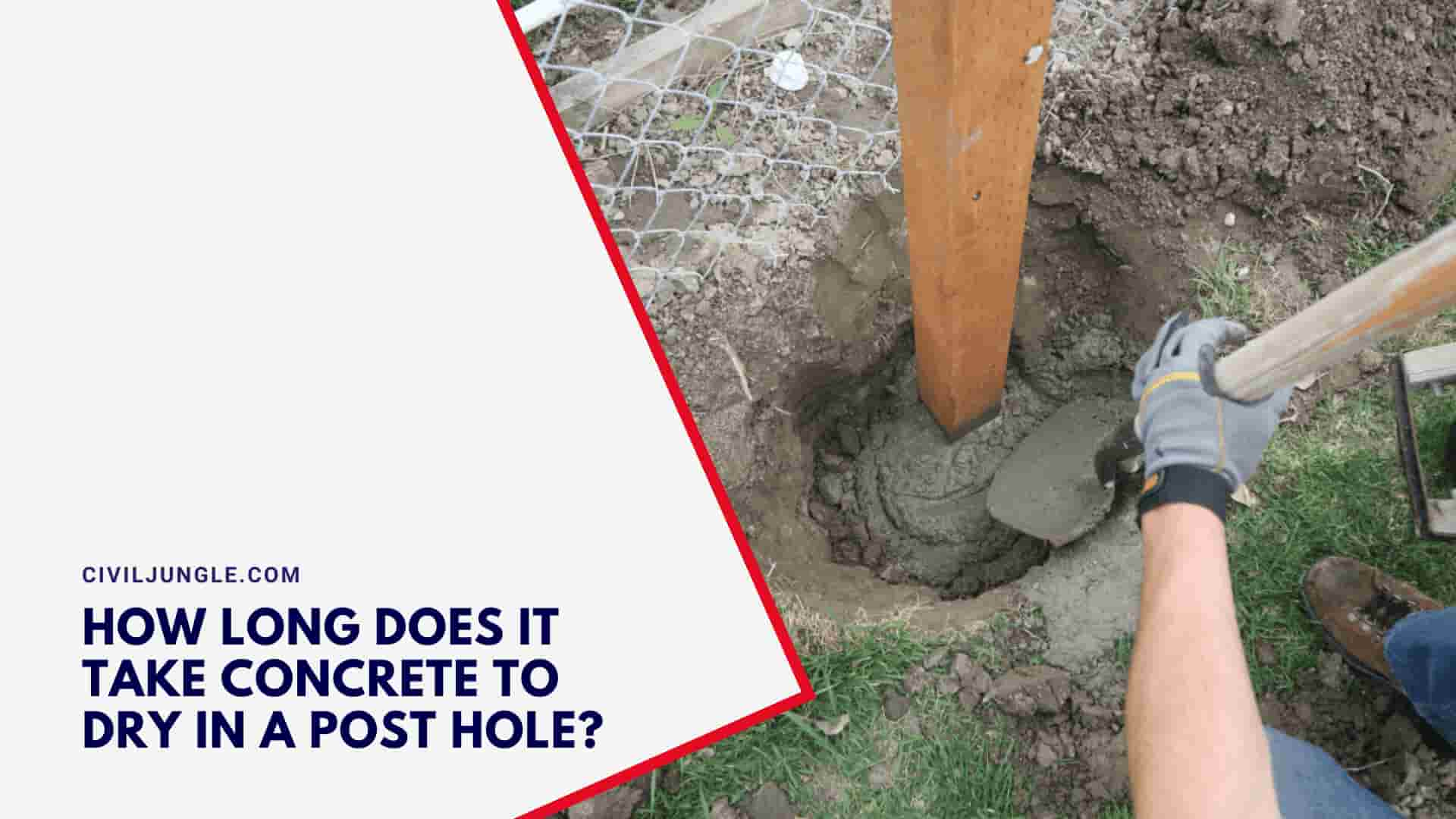
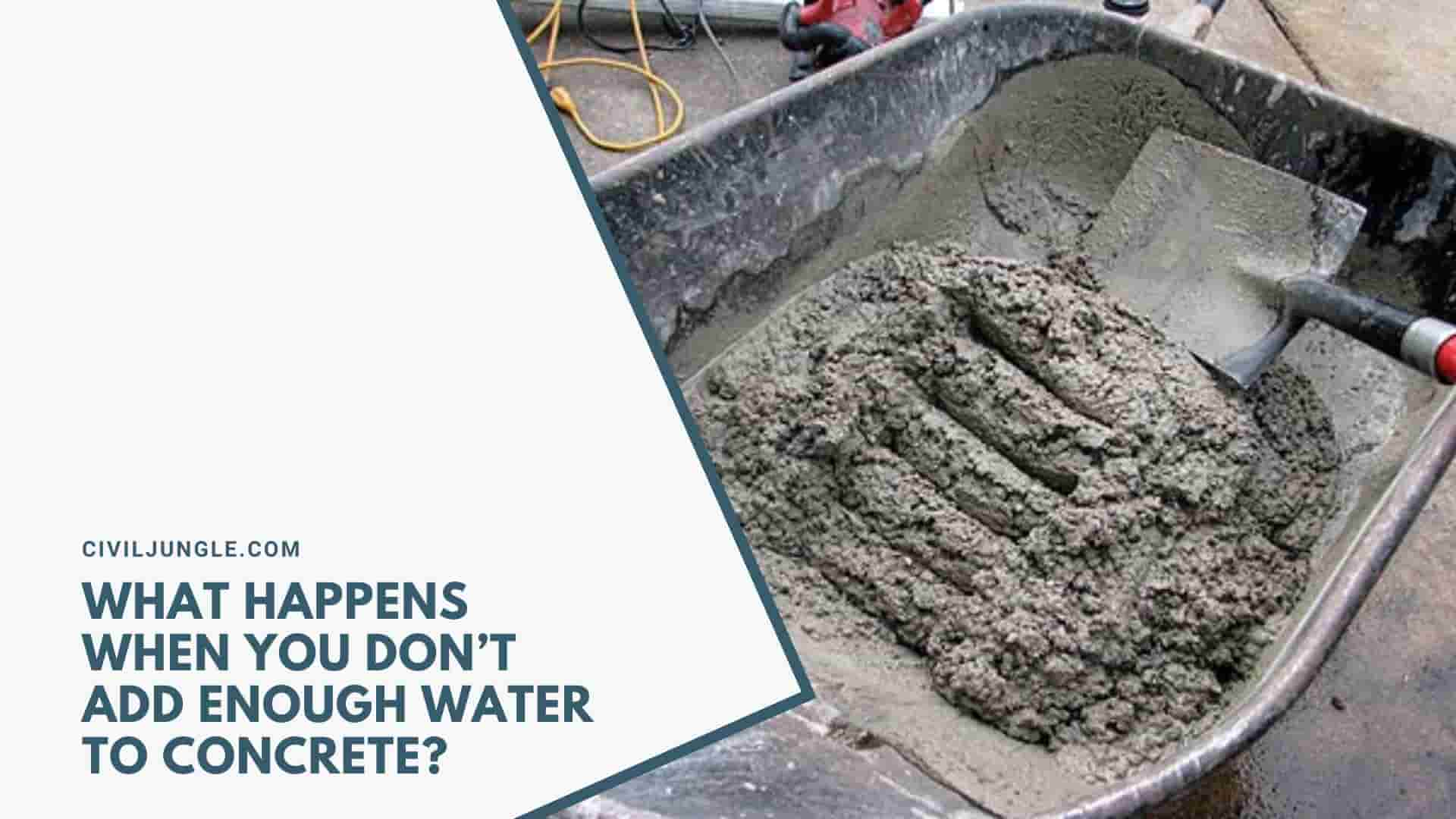

Leave a Reply